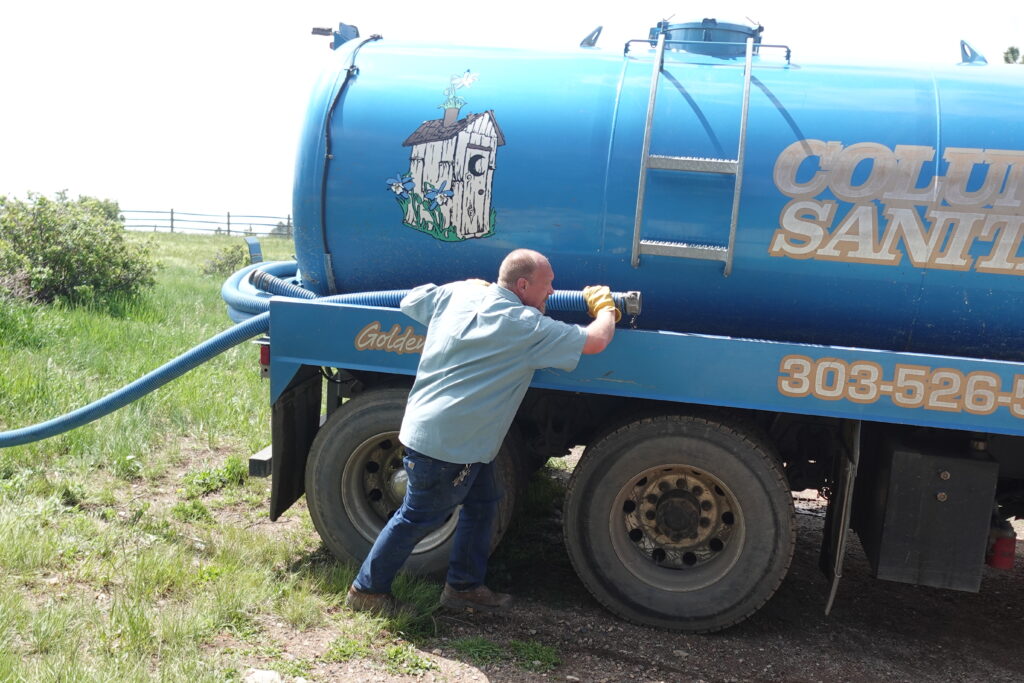How to Schedule Septic Jobs Efficiently Without More Staff
Key Takeaways
- Inefficient scheduling can cost septic businesses $20K+ per truck per year in missed jobs, wasted fuel, and overtime labor.
- Grouping jobs by location and pre-planning routes can increase job volume by 25–40% without adding trucks or staff.
- Manual methods like whiteboards or spreadsheets lead to scheduling errors, poor customer experience, and dispatcher burnout.
- Septic software automates job assignment, route planning, and technician coordination — cutting admin time in half and scaling operations faster.
Why Scheduling Is the Bottleneck in Most Septic Companies
For most septic businesses, the real growth limiter isn’t a lack of demand — it’s inefficient scheduling. If your team is missing one or two jobs a week due to poor planning or routing mistakes, that adds up to tens of thousands in lost revenue over a year.
It’s easy to overlook scheduling when you’re busy handling customer calls, truck maintenance, and disposal site logistics. But without a solid system, your team ends up bouncing between job sites, wasting fuel, racking up overtime, and frustrating customers with delays.
Here are a few signs your current scheduling setup is holding you back:
- Jobs are getting double-booked or missed entirely
- You’re constantly reshuffling routes at the last minute
- Drivers are spending more time on the road than on-site
- You rely on whiteboards, spreadsheets, or handwritten notes
- You or your dispatcher are stuck in reaction mode all day
This kind of chaos doesn’t just slow you down — it bleeds money. Efficient scheduling isn’t about cramming in more jobs. It’s about making the most of the time, trucks, and staff you already have. And for most companies, the solution starts with ditching the manual systems.

The Hidden Costs of Bad Scheduling
Inefficient scheduling isn’t just inconvenient — it’s expensive. Every time your crew drives an extra 20 miles due to poor routing or waits around for a late customer, you’re losing money in ways that don’t always show up on a balance sheet.
Here’s where the real costs pile up:
- Fuel waste: Constant crisscrossing across your service area burns fuel fast, especially with diesel prices rising.
- Labor inefficiency: When your team is stuck in traffic or driving between distant jobs, you’re paying for unproductive time.
- Missed revenue: A poorly scheduled day might leave a truck with enough time for one more job — but no one booked it.
- Customer churn: Late arrivals or last-minute cancellations frustrate homeowners and hurt your reputation.
- Dispatcher burnout: If you’re rescheduling jobs constantly or making last-minute calls to reroute drivers, your office staff will burn out fast.
Let’s say your average septic job brings in $400. If you lose just one job per week because of scheduling gaps, that’s over $20,000 a year in lost income — per truck. Multiply that across your fleet, and the impact becomes massive.
Efficient scheduling isn’t just about working harder. It’s about working smarter — reducing drive time, stacking jobs in the same area, and freeing up bandwidth to grow.
How Efficient Septic Companies Structure Their Day
The most productive septic businesses don’t just react to jobs — they run on a system. That system starts with how they structure each workday.
Rather than scrambling in the morning to figure out who’s going where, efficient companies plan their schedules at least one day in advance. They assign jobs based on geography, urgency, and truck capacity — not just what’s next on the list.
Here’s how a well-structured day typically looks:
- Routes are grouped by ZIP code or neighborhood
- First jobs are scheduled closest to the disposal site or company yard
- Emergency calls are slotted into buffer zones, not tacked onto packed days
- Drivers have digital access to job notes, directions, and customer info before leaving
- Crews check in and out with timestamps so the office always knows job status
Instead of 5 jobs scattered across 60 miles, an optimized route might knock out 6–7 jobs within a tight radius — saving hours in windshield time and cutting fuel costs significantly.
Key habits of high-efficiency scheduling:
- Pre-plan routes the day before
- Use routing software that visualizes jobs on a map
- Group jobs by service zone
- Assign realistic time windows with built-in buffers
- Keep customers informed with automated reminders
The goal isn’t to overload your trucks — it’s to eliminate wasted motion. A few tweaks to how you plan the day can add thousands in revenue without working a single extra hour.

Tools That Automate Scheduling (So You Don’t Have To)
Manual scheduling works — until it doesn’t. When your business grows past a few jobs a day, tools like whiteboards, spreadsheets, or phone reminders start to crack. You end up spending more time managing the calendar than actually running your business.
That’s where septic business software comes in.
Platforms like ServiceCore are designed specifically for waste haulers, making scheduling faster, cleaner, and scalable. With the right tool, you can automate the hardest parts of your day without hiring more staff.
Here’s what modern scheduling software does for you:
- Drag-and-drop calendar: Easily assign jobs to drivers and trucks with a visual interface
- Recurring job setup: Automate repeat services like annual or quarterly pump-outs
- Route optimization: Group jobs by location to minimize drive time and fuel use
- Driver availability built-in: Only see time slots where technicians and trucks are free
- Mobile access: Crews get updated job info, directions, and customer notes in real time
The impact? Less time juggling calls, fewer missed appointments, and more jobs completed each day — with the same crew and trucks.
One ServiceCore customer was able to double their daily job volume without adding a single dispatcher, simply by using the software’s automated scheduling and routing tools.
If you’re still trying to scale with manual methods, you’re burning time and money. The right software isn’t an expense — it’s a growth lever.
| Manual Scheduling | Software-Based Scheduling |
|---|---|
| Jobs tracked with whiteboards or spreadsheets | Centralized digital calendar with drag-and-drop tools |
| Frequent rescheduling and missed appointments | Automated reminders and real-time updates |
| Route planning takes hours each night | Optimized routes built in minutes |
| Techs rely on calls/texts for directions | Drivers access job info and notes from mobile app |
| Dispatcher burnout from constant adjustments | Smoother days with fewer interruptions and reroutes |
How to Train Your Team to Stick to the Schedule
Even with the best software in place, your scheduling system is only as strong as the team using it. If your drivers don’t follow the plan, miss details, or forget job steps, the whole day can fall apart.
Training your crew to stick to the schedule isn’t about micromanaging — it’s about setting clear expectations and giving them the tools to succeed.
Here’s how efficient septic businesses keep their teams aligned:
- Onboard every driver with your scheduling process — show them how jobs are assigned, what the day should look like, and how to handle changes on the fly.
- Use digital work orders — paper gets lost or outdated. Mobile access ensures every tech sees the latest job info, customer notes, and location details.
- Create a daily routine — start each day with a quick check-in or huddle. Go over routes, confirm equipment, and flag any special instructions.
- Enforce real-time updates — have drivers mark jobs complete in the system as they finish them. This keeps the office in sync and helps with dispatching or last-minute changes.
- Collect field feedback — drivers often see issues (like a blocked tank lid or poor access) before the office does. Make it easy for them to log notes for future jobs.
What great scheduling discipline looks like:
- Drivers leave on time with full clarity
- No jobs are missed due to miscommunication
- Techs follow optimized routes — not shortcuts they “think” are better
- The office can see job status in real-time without constant phone calls
- Customers get updates and show up when expected
It takes a little time to build these habits, but once your team is in sync with the system, you’ll waste less time chasing people down — and spend more time getting paid.
When to Reevaluate Your Scheduling System
Sometimes the biggest problem in your business is the one you’ve gotten used to. If your scheduling process feels “good enough,” but you’re constantly stressed, behind, or losing jobs — it’s time to take a hard look at what’s actually working (and what’s not).
Here are the clearest signs you’ve outgrown your current system:
- You’re double-booking jobs or missing appointments
- Your drivers are constantly calling in for directions or customer info
- You can’t tell at a glance who’s on the road or what jobs are complete
- You’re spending hours building routes manually every night
- You’re considering hiring someone just to manage the calendar
These are all symptoms of a business running on outdated tools. A single missed job each week — especially if it’s a $400–$500 residential pump-out — adds up fast.

Here’s a quick gut check:
If this sounds like you…
- You’re using a whiteboard or Excel to track jobs
- You rely on memory to follow up with customers
- You feel like you “couldn’t take on more work even if it came in”
- Your team is constantly texting or calling to figure out where to go next
…it’s time to upgrade.
A modern scheduling system doesn’t just help you stay organized. It gives you the bandwidth to grow without adding more chaos. More jobs, fewer mistakes, better customer experience — that’s what operational maturity looks like.
FAQs
The most efficient way is to group jobs geographically and use route optimization tools. Scheduling software like ServiceCore can automate this by mapping jobs and minimizing drive time between stops.
Plan routes the day before and cluster jobs in the same ZIP code or service zone. Use software that optimizes routes and eliminates unnecessary backtracking.
Yes. Most septic-specific platforms allow you to set recurring services (e.g., annual or quarterly pump-outs), so those jobs auto-populate your calendar without manual entry.
No. With the right software, you can manage multiple trucks from a central dashboard. You’ll see driver availability, job progress, and routes for all vehicles in one place.
Absolutely. Many small septic companies run lean with owner-operators using mobile apps to schedule, route, and invoice on the go. The right tools can replace the need for a full-time dispatcher.


